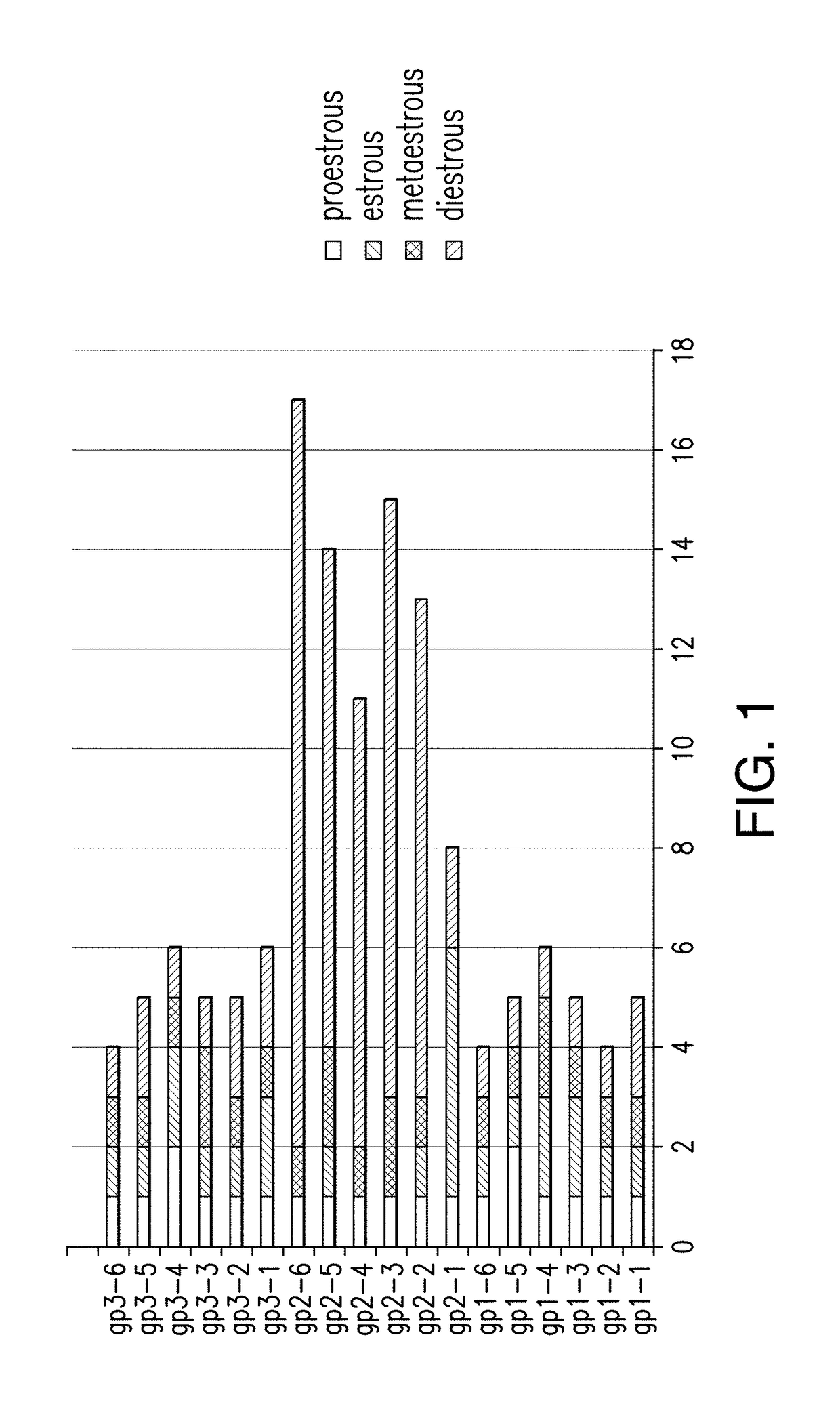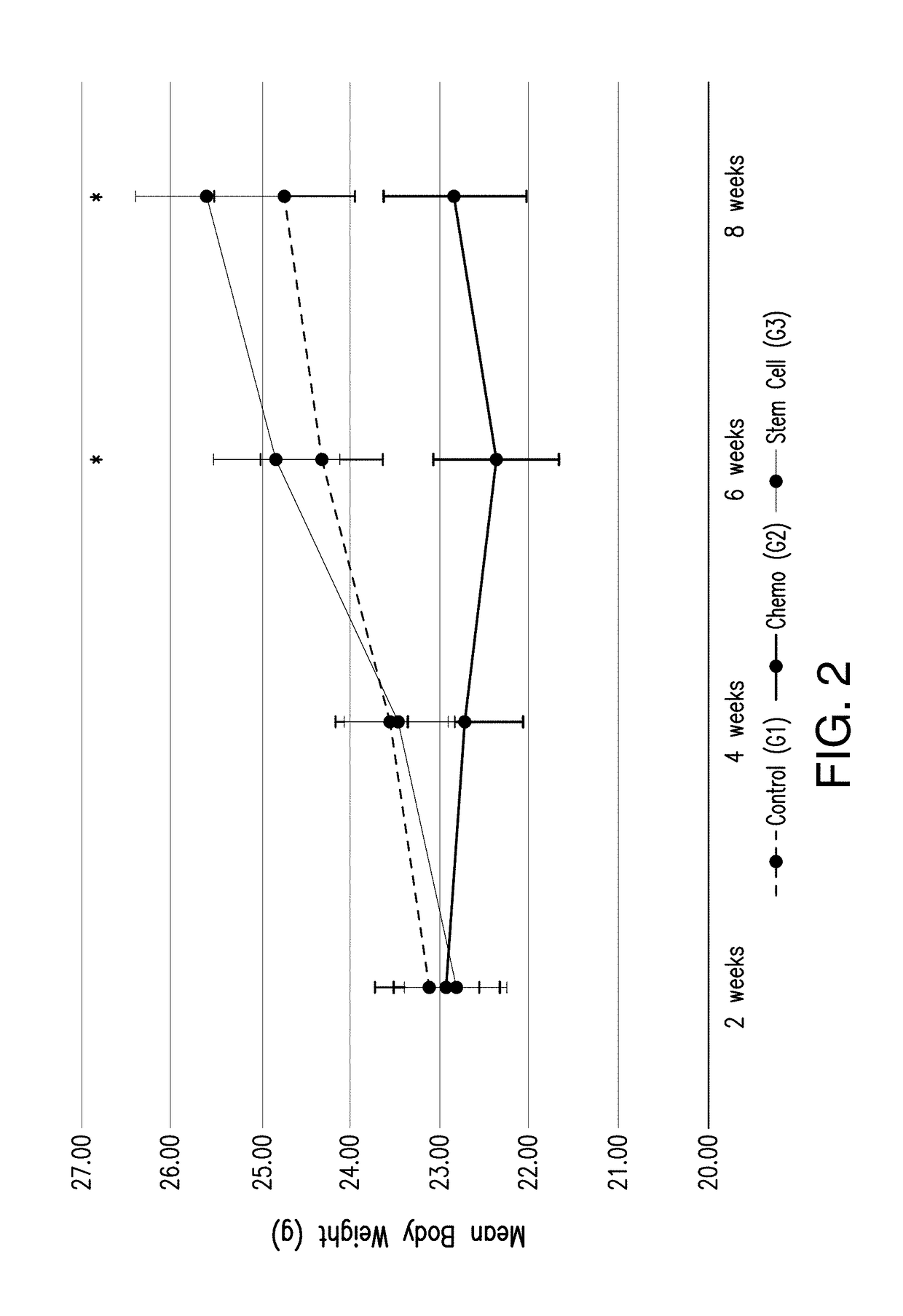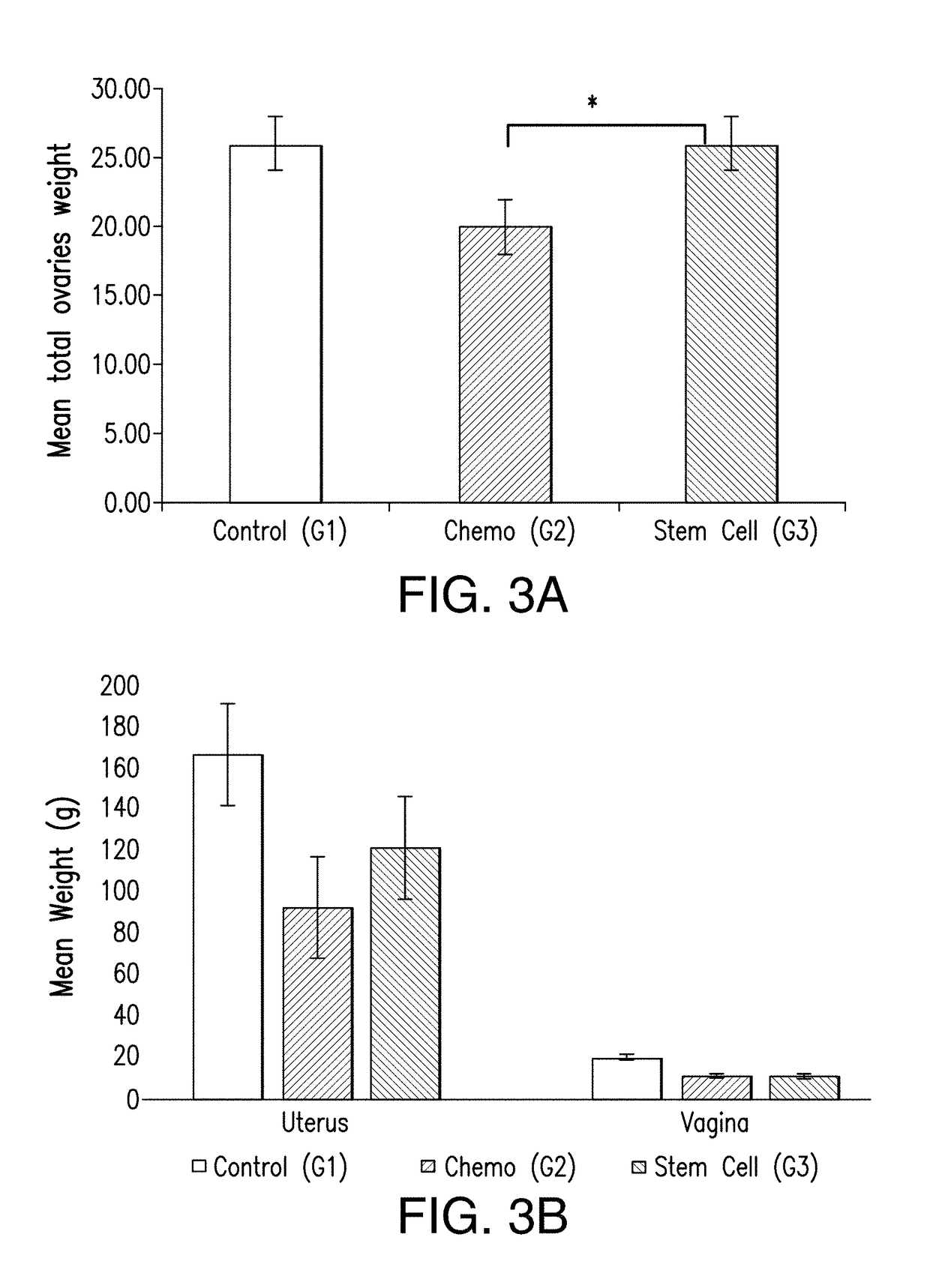Methods and Compositions for Treating Ovarian Failure
a technology for ovarian failure and compositions, applied in the field of methods and compositions for treating ovarian infertility, can solve the problems of ineffective treatment, ethically unacceptable to some couples, and prohibitively expensive alternatives such as egg donation, and achieve the effects of promoting folliculogenesis and restoring ovarian hormone production
- Summary
- Abstract
- Description
- Claims
- Application Information
AI Technical Summary
Benefits of technology
Problems solved by technology
Method used
Image
Examples
example 1
mear Changes
[0039]Material and Methods
[0040]Animals
[0041]Adult female C57BL6 mice, 4-6 weeks of age, weighing between 20-25 g, were purchased from Charles River Co. (Wilmington, Mass.). Animals were housed in groups of six within polyethylene cages and allowed to acclimatize to the animal facility environment for at least one week prior to study initiation. Animals were maintained in an environmentally controlled room with 12 hour light: 12 hour dark cycles (lights on at 6:00 a.m.), 22° C. with a humidity range of 50% to 60%. Animals were allowed to access commercial pelleted mouse chow and water.
[0042]All animal procedures were approved by Georgia Regents University's (GRU) Institutional Animal Care and Use Committee (IACUC), and performed in accordance with the National Research Council Guide for Care and Use of Laboratory Animals. The protocol was approved by the GRU Institutional Review Board (IRB). All surgeries were performed under Isoflurane inhalation anesthesia, and mice we...
example 2
y Weight and Organ Weight Changes
[0055]Results
[0056]The mean body weight tended to increase with time in groups 1 and 3; whereas, mean body weight remained relatively the same or decreased over time in group 2 as shown in FIG. 2. There was not a significant difference in body weight between groups 1 and 3 at 6 and 8 weeks' time points (p=0.30, 0.13) respectively; however, they had a significantly higher mean body weight than group 2 (p-value <0.0001) (FIG. 2).
[0057]Estrogen responsive organs, demonstrated remarkable increases in weight at all timepoints of the experiment, as shown in FIG. 3. Statistical analysis indicated that there were significant differences among the groups in the mean weight for the ovaries (p=0.0030), uterus (p=0.0015), kidneys (p=0.0001), and liver (p=0.0018), while there were no significant differences among the groups in the mean weight of spleen (p=0.1106), vagina (P=0.66) or lungs (p=0.1778). (FIGS. 3a, b, c, and d)
[0058]There were no significant differen...
example 3
Changes
Materials and Methods
[0059]Blood Collection for Hormonal Assays:
[0060]Blood samples from all groups were collected using the retro-orbital technique with sample size averaging 200 ul / animal. Samples were placed on ice until centrifugation at 4° C. at 1500×g for 10 minutes. Sera were harvested and stored frozen at −80° C. until analyzed for ovarian hormonal assay profile (E2 estradiol, P4 progesterone, AMR anitmullerian hormone, FSH follicule-stimulating hormone and luteinizing hormone (LH).
Results
[0061]Blood samples were collected from all animals at baseline and at varying timepoints 2, 4, 6, and 8 weeks from day of surgery. Serum FSH, Antimullerian hormone AMR and Estradiol levels were measured by “The University of Virginia's Center for Research in Reproduction Ligand Assay and Analysis Core. For the detection of Estradiol in mouse serum, an ELISA analysis (Rodent Estradiol ELISA; CalBiotech, Spring Valley, Calif.) was conducted. Assay precision was 6.1% (intra-assay) and ...
PUM
 Login to View More
Login to View More Abstract
Description
Claims
Application Information
 Login to View More
Login to View More - R&D
- Intellectual Property
- Life Sciences
- Materials
- Tech Scout
- Unparalleled Data Quality
- Higher Quality Content
- 60% Fewer Hallucinations
Browse by: Latest US Patents, China's latest patents, Technical Efficacy Thesaurus, Application Domain, Technology Topic, Popular Technical Reports.
© 2025 PatSnap. All rights reserved.Legal|Privacy policy|Modern Slavery Act Transparency Statement|Sitemap|About US| Contact US: help@patsnap.com



